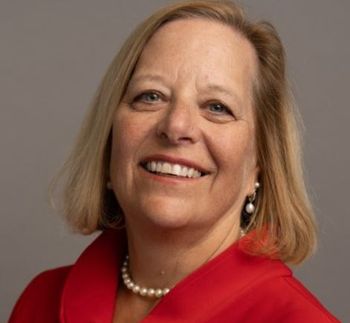
Pneumonic Plague's Killing Ability Hinges On Single Protein
ST. LOUIS -- In a finding with potential antibioterror implications, a key protein's absence appears to slow the deadly attack of pneumonic plague, potentially making it susceptible to antibiotic treatment, according to researchers here.
ST. LOUIS, Mo., Jan. 25 -- In a finding with potential antibioterror implications, a key protein's absence appears to slow the deadly attack of pneumonic plague, potentially making it susceptible to antibiotic treatment, according to researchers here.
If the plasminogen activator Pla is missing or inactive, the characteristic pneumonia of the plague takes longer to develop, even though the bacteria responsible, Yersinia pestis, continues to grow and spread, found William Goldman, Ph.D., of Washington University School of Medicine here.
The prolonged survival offers "a therapeutic option to extend the period during which antibiotics are effective," Dr. Goldman and colleagues reported in the Jan. 25 issue of Science.
"By the time most doctors recognize an infection as plague, rather than the flu, it's already too late to begin antibiotic treatment," Dr. Goldman said.
"That makes pneumonic plague a concern both because of its rare natural outbreaks, one of which began in the Congo in 2005, and because of its potential use as a bioweapon," he said.
Dr. Goldman said that medications to inhibit Pla might be useful in future human outbreaks, although the current study used experimental mice that develop a disease similar to pneumonic plague when given the bacterium intranasally.
Depending on how it is introduced to the body, Y. pestis can result in pneumonic plague, bubonic plague, and septicemic plaque. During the Middle Ages -- as bubonic plague -- the pathogen depopulated Europe, killing an estimated one person in three.
Because of its rapid killing power in the pneumonic form, it is widely feared as a possible bioterror weapon, Dr. Goldman and colleagues said.
The researcher had suspected that Pla was used by the bacterium to break up blood clots surrounding pockets of infection. The clotting mechanism is seen as the body's way of quarantining the bacteria and keeping it from the rest of the body.
To test that idea, they infected mice with three different variants of Y. pestis -- a wild-type strain, a strain in which the gene for Pla was missing, and the same strain but with the coding sequence for the Pla gene added.
The mice that got the wild-type strain all died within 3.5 days and at much the same time after infection. In contrast, only half the mice given the non-Pla strain developed fatal plague within seven days and their deaths were more separated in time.
Finally, the addition of the Pla coding sequence restored the virulence of the bacteria, Dr. Goldman and colleagues said.
But bacterial growth in the mice that got the non-Pla strain was different from the other two groups -- after 24 hours the amount of bacteria in the lungs was lower by a factor of about a million than it was in the other animals.
At the same time, Y. pestis was detected in the spleens of all three groups at about the same level, indicating that the pathogen was still finding a way out of the lungs, despite the absence of Pla.
One of the hallmarks of pneumonic plague is edema in the lungs, which can be measured by weighing the organs. Interestingly, the researchers said, the lungs of mice given the non-Pla strain showed no change in weight although the lungs of the other groups were significantly heavier.
The implication is that "the death of mice infected with this strain is not due to pneumonia but rather is caused by systemic infection," the researchers said.
In fact, Dr. Goldman and colleagues concluded, Pla controls the ability of the Y. pestis to cause pneumonic plague, possibly by promoting bacterial growth and inflammation.
To test that idea, they created a strain of Y. pestis in which the Pla gene was masked, but could be made active by a dose of the antibiotic tetracycline.
Mice given this variant initially had the non-pneumonic variant of the disease, but a dose of the antibiotic turned the disease into the full-blown pneumonic version, Dr. Goldman and colleagues reported.
Moreover, if the mice are infected and also given some tetracycline, the disease begins as pneumonic plague, but as the antibiotic is cleared -- and the Pla is again masked -- the disease reverts to the less-deadly systemic plague.
That implies, Dr. Goldman colleagues said, that blocking Pla in the course of the disease "may indeed prolong the survival of the affected individual."
Newsletter
Enhance your clinical practice with the Patient Care newsletter, offering the latest evidence-based guidelines, diagnostic insights, and treatment strategies for primary care physicians.


















































































































































































































































































